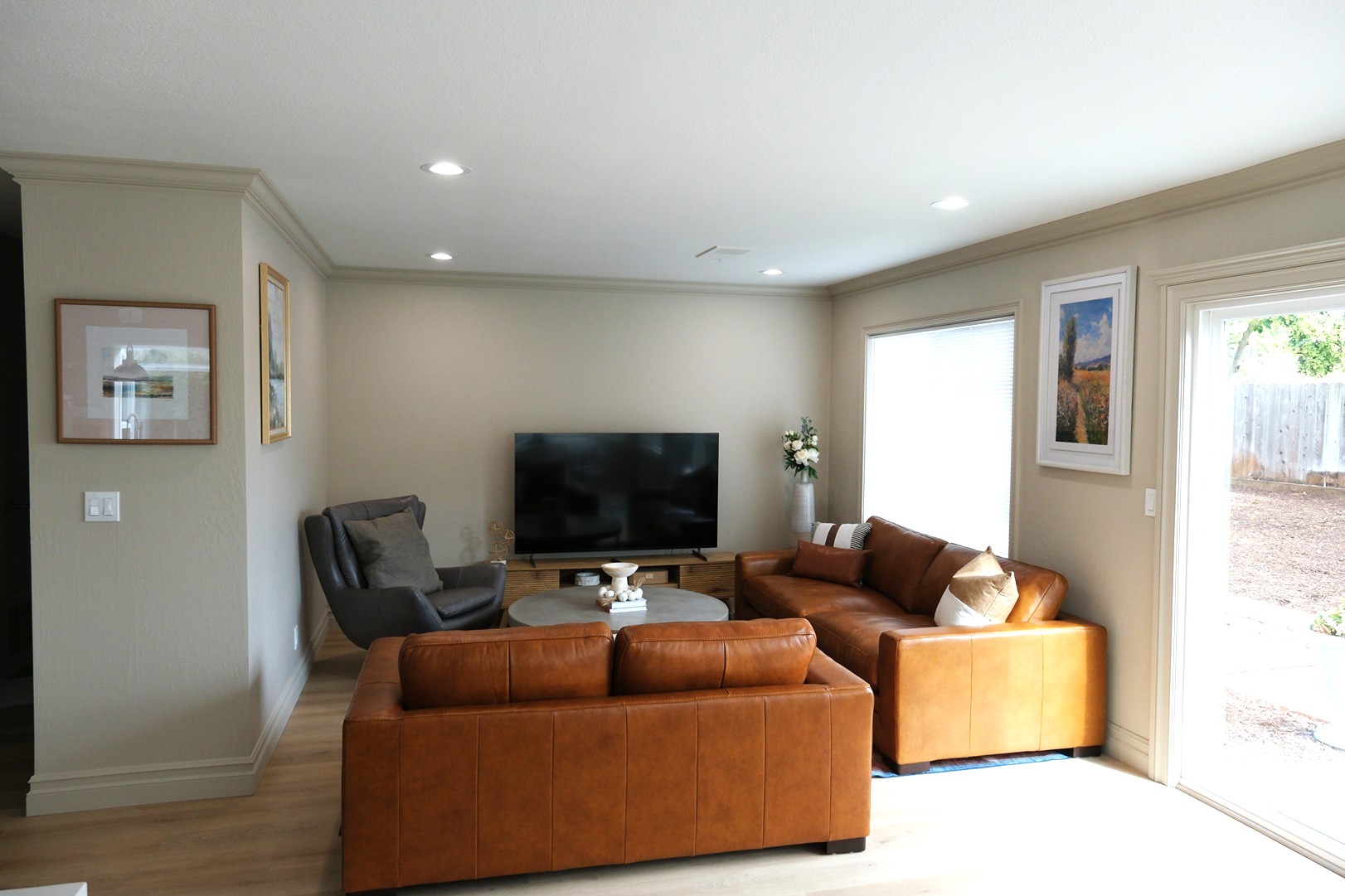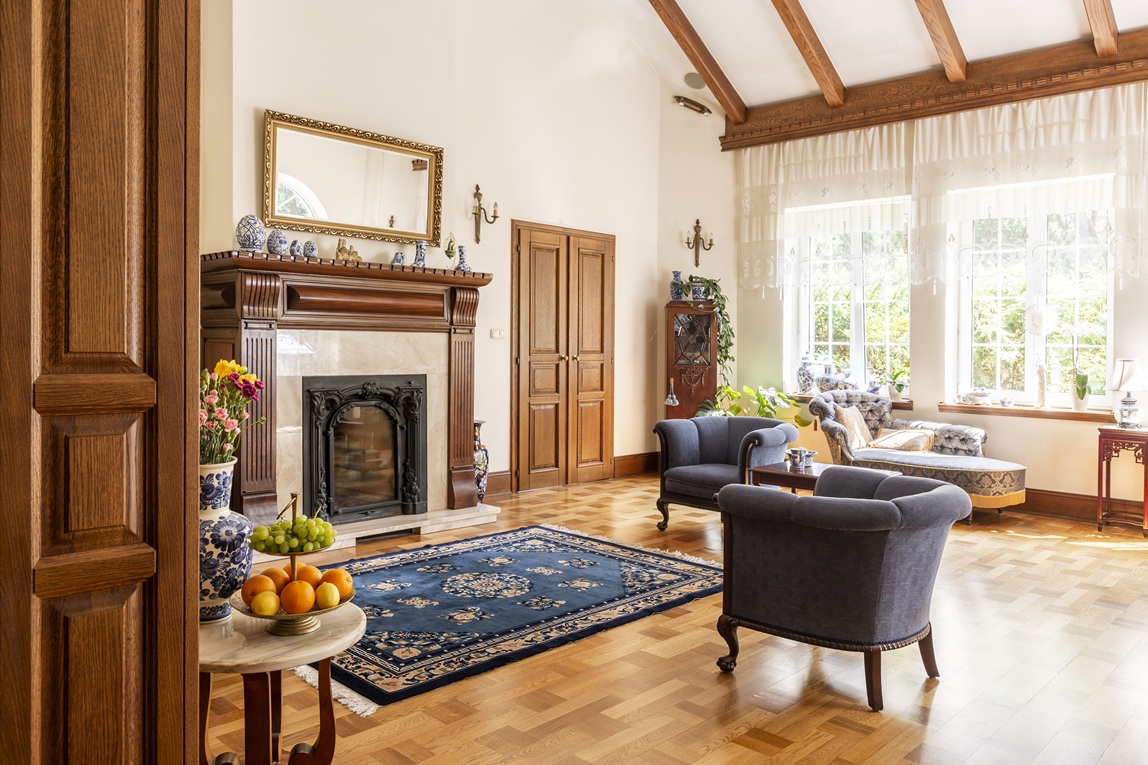
Blog
Baseboard Moulding Style Guide: Modern, Classic & Craftsman

Baseboards might seem like a finishing touch to the last piece of the puzzle when designing or remodeling a room but their impact is anything but minor. A well-chosen baseboard moulding ties a room together, giving it a sense of polish, proportion, and personality. It bridges the gap between wall and floor, literally and visually, turning a collection of design elements into a cohesive, complete space.
Whether you lean toward clean modern minimalism, timeless traditional charm, or the sturdy handcrafted look of a craftsman home, understanding baseboard styles can completely transform your interior. In this guide, we’ll walk through the three most popular and enduring baseboard aesthetics: modern, classic, and craftsman. You’ll also learn how to match these styles to your home’s architecture, what materials to use, and where to find quality baseboards that bring your vision to life.
Why Baseboards Are More Important Than You Think
Baseboards aren’t simply decorative. They serve a very practical purpose. The small gap between the floor and the wall left during construction to allow materials to expand and contract needs to be covered. Baseboards fill that space neatly while protecting the wall from wear and tear.
They guard against scuffs from furniture, vacuum cleaners, shoes, and mops, especially in high-traffic areas. But beyond function, baseboards provide definition. They ground your space, adding a visual frame that makes a room feel finished.
A home without baseboards tends to look incomplete, even when the paint is fresh and the floors are perfect. Choosing the right baseboard style ensures that the functional becomes beautiful.
Modern Baseboard Moulding: Sleek, Seamless, and Stylish
Modern design is all about simplicity. It celebrates open space, neutral tones, and crisp lines that make a room feel calm and effortless. The same principles guide modern base board design.
In a modern home, you won’t find bulky decorative mouldings or carved profiles. Instead, you’ll see smooth, straight-edged baseboards that quietly outline the room without drawing attention to themselves.
Features of Modern Baseboards
-
- Clean, straight profiles with no ornamentation
- Minimal thickness for a subtle appearance
- Often painted the same color as the walls
- Square or beveled edges for clean geometry
- MDF or primed wood for a smooth finish
Modern baseboards act like the silent partner of great design noticeable only for how perfectly they fit the space. When painted the same color as the wall, they create an unbroken line that makes the walls appear taller and the room more expansive.
This approach is especially popular in contemporary homes in Concord, South San Francisco, Santa Clara, and Sacramento, where open-concept layouts and natural light are key design elements.
If your floors feature light oak, polished concrete, or wide-plank vinyl, modern base trim molding can help maintain the flow without distraction. For extra visual lift, some designers extend the baseboard height slightly using taller but thinner moulding to emphasize the architecture’s linear rhythm.
Materials for Modern Mouldings
Modern baseboards often rely on cost-effective, smooth materials that are easy to paint and maintain:
-
-
- MDF (Medium Density Fiberboard): Excellent for a seamless painted look.
- Poplar or Pine: Light natural woods that can be primed or painted for clean finishes.
If you want your modern home to look crisp and intentional, go for a baseboard with a flush or square edge, painted to match the wall, and paired with minimal door casings.
Classic Baseboard Moulding: Elegance That Never Ages

Where modern design whispers, classic design speaks with confidence. Classic baseboards are timeless, offering graceful lines and detailed profiles that feel rich without being fussy.
They’re the kind of baseboards that remind you of historic architecture thick, layered, and perfectly proportioned. In traditional homes, baseboards help define the grandeur of the space, serving as both a decorative element and a practical feature.
Features of Classic Baseboards
-
- Elegant profiles with curves or layered edges
- Taller height (typically 5 to 7 inches or more)
- Painted in crisp white or warm cream to contrast wall colors
- Often paired with crown moulding and detailed window trim
Classic baseboards create balance. When your walls feature bold paint colors, ornate wainscoting, or wallpaper, a wide white baseboard acts as a visual “reset,” giving the eye a resting place.
In a classic living room, a tall base board with a gently rounded top edge can elevate the entire look of the room. The detailing draws the eye subtly, emphasizing craftsmanship while tying the walls and flooring together.
Materials for Classic Styles
Traditional baseboards are typically made from wood a natural material that can be shaped, layered, and finished beautifully:
-
- Solid Pine or Oak: Timeless and durable, ideal for homes where authenticity matters.
- Poplar: Smooth and easy to paint, suitable for achieving a crisp white trim.
- MDF: For homeowners who love the look of wood but want a more affordable option.
To complete the look, many homeowners pair classic baseboards with matching crown moulding or chair rails to frame the room elegantly.
If your home leans toward Colonial, Georgian, or Victorian design, classic baseboards are the perfect fit. They blend craftsmanship and elegance in a way that feels both enduring and familiar.
Craftsman Baseboard Moulding: Honest, Warm, and Handcrafted

If modern is sleek and classic is ornate, craftsman moulding is all about integrity and balance. The craftsman style celebrates natural materials, visible joinery, and human craftsmanship.
Originating from the early 1900s Arts and Crafts movement, craftsman interiors emphasize strong horizontal lines, warm wood tones, and clean yet detailed trim that highlights structure over decoration.
Features of Craftsman Baseboards
-
- Straight, simple lines with a defined step or ledge at the top
- Medium-to-tall height (4–6 inches)
- Solid wood with natural or stained finishes
- Coordinated trim across doors, windows, and wainscoting
- Focus on symmetry and proportion rather than ornamentation
Craftsman base trim molding is substantial but never overbearing. It feels grounded, honest, and built to last just like the homes it complements.
This style often pairs beautifully with other natural elements such as stone fireplaces, exposed beams, or built-in cabinetry. A craftsman baseboard in rich oak or walnut can bring warmth to a neutral room, creating a feeling of comfort and authenticity.
Material Choices for Craftsman Homes
-
- Oak, Maple, or Cherry: Highlighted with natural or medium stains to show off the wood grain.
- Poplar: Paintable, for those who prefer a matte or colored finish.
- Custom Profiles: Many craftsman homes use unique, handmade profiles to reflect their architectural individuality.
If you’re restoring or designing a bungalow or mid-century home, craftsman baseboards strike the perfect balance between simplicity and soul.
Choosing the Right Style for Your Home
Each baseboard style tells a story about your home’s personality. The choice depends on both the architecture and how you want the space to feel.
If your home has large open areas, glass walls, and modern lighting, modern baseboards with clean lines will enhance the openness.
If your home features arched doorways, panelled doors, and decorative moulding, classic baseboards maintain visual harmony and elegance.
If your space has natural wood accents, built-in furniture, or textured walls, craftsman mouldings provide warmth and authenticity that blends beautifully with traditional materials.
Think about consistency too. Baseboards, door casings, and crown moulding should share similar proportions and design language. When these elements flow together, your home feels unified and intentional.
Sizing and Proportion Tips
Baseboards come in many heights and thicknesses, and choosing the right proportion makes all the difference.
-
- Low ceilings (8 feet): Go for baseboards between 3 and 5 inches tall.
- Standard ceilings (9 feet): Choose 4 to 6 inches.
- Tall ceilings (10 feet or more): Use 6 to 8 inches for balanced proportion.
Remember: the taller the wall, the taller the baseboard should be. A short baseboard in a high-ceiling room will look undersized, while an overly tall one in a small space can overwhelm the design.
For a clean installation, make sure all baseboards are aligned perfectly, caulked neatly, and painted or stained with care. These finishing details elevate even the simplest moulding.
How to Coordinate Baseboards with Other Trim
Your baseboards don’t stand alone. They’re part of a larger design system that includes door casings, crown moulding, and window trim.
-
- In modern homes, choose simple, square casings and avoid heavy crowns. The goal is unity through simplicity.
- In classic interiors, balance taller baseboards with crown moulding and paneled doors for an elegant, layered look.
- In craftsman homes, match the baseboard and casing height ratios to maintain proportion and emphasize structure.
When your trim elements align visually, the whole room feels deliberate and well crafted.
Finishing Touches: Color and Texture
Color dramatically affects how your baseboards interact with your walls and flooring.
-
- White or cream baseboards brighten up darker walls and create a crisp, traditional look.
- Matching wall color gives a modern, seamless effect that elongates the space.
- Stained wood finishes highlight craftsmanship and add natural warmth.
Texture matters too. Matte finishes feel soft and sophisticated, while glossy ones are easy to clean and catch more light perfect for high-traffic areas like hallways or living rooms.
Installation and Maintenance Tips
Proper installation ensures your baseboards not only look beautiful but last for decades.
-
- Measure twice, cut once: Precision matters, especially in corners.
- Use a miter saw for angled joints and inside corners.
- Caulk the seams between the baseboard and wall to eliminate gaps.
- Paint or stain before installation for a smoother finish and fewer touch-ups.
- Wipe regularly with a damp cloth to prevent dust and dirt buildup.
If you’re working with layered or detailed moulding, professional installation can make a noticeable difference in the finished look.
Where to Find Quality Baseboards Near You
If you’re searching for baseboards near me, you’ll find that not all trim is created equal. The right supplier offers both variety and expertise.
At The Moulding Company, we’re proud to serve homeowners and contractors in Concord, South San Francisco, Santa Clara, and Sacramento with an extensive selection of mouldings from minimalist modern baseboards to handcrafted craftsman moulding profiles.
Our showrooms feature hundreds of design options you can see and feel before choosing. Whether you want sleek MDF baseboards for a modern home or rich oak mouldings for a classic or craftsman design, our team can help you find the perfect fit.
Final Thoughts
Baseboards may live at floor level, but they play a major role in defining your home’s style. They frame every wall, protect every surface, and add that sense of completion that separates a good design from a great one.
Modern baseboards deliver simplicity and flow. Classic mouldings add character and elegance. Craftsman baseboards bring integrity and warmth. Each one tells its own story and when chosen thoughtfully, they tell yours too.
Visit The Moulding Company today to explore our full selection of modern, classic, and craftsman baseboard mouldings. Let our experts help you choose the perfect design for your home and make your space truly unforgettable.
FAQs
1. What is the difference between modern, classic, and craftsman baseboards?
Modern baseboards feature clean, simple lines and minimal detailing for a sleek, contemporary look. Classic baseboards are more decorative, often taller and layered, giving rooms a timeless and elegant finish. Craftsman baseboards focus on structure and craftsmanship, using solid wood with defined edges and natural or stained finishes that highlight texture and warmth.
2. What materials are best for baseboards in modern homes?
For modern homes, materials like MDF or PVC are ideal because they provide smooth surfaces that are easy to paint and maintain. MDF works well for interior spaces where you want sharp, clean lines, while PVC and polyurethane are moisture-resistant options perfect for kitchens and bathrooms. Both materials can be shaped into sleek base trim molding profiles that match the minimalist aesthetic of contemporary interiors.
3. How do I match baseboards with my flooring and wall colors?
To achieve a cohesive look, coordinate your base board color and finish with your flooring and wall tones. White or cream baseboards create contrast against dark floors and colored walls. Matching the baseboard to your wall color gives a clean, modern appearance, while stained wood finishes work beautifully with natural flooring materials like oak or walnut. The key is to balance your baseboard should complement, not compete, with surrounding elements.
4. Can I mix baseboard styles in different rooms of my home?
Yes, but the transition should feel intentional. You can use craftsman moulding in main living areas to add warmth and character, then switch to simpler, modern baseboards in bedrooms or hallways for a lighter touch. Keep consistent colors or materials throughout the house to maintain a unified look. Mixing styles works best when each baseboard design suits the personality and purpose of the room.
5. Why should I buy baseboards from The Moulding Company?
At The Moulding Company, you’ll find one of California’s largest selections of base board and base trim molding styles. Whether you love modern simplicity, classic elegance, or handcrafted craftsman moulding, our experts can help you choose the perfect profile and material for your home. With showrooms in Concord, South San Francisco, Santa Clara, and Sacramento, we make it easy to find quality moulding near you.
- MDF (Medium Density Fiberboard): Excellent for a seamless painted look.
-
